#ville de lyon
Explore tagged Tumblr posts
Text
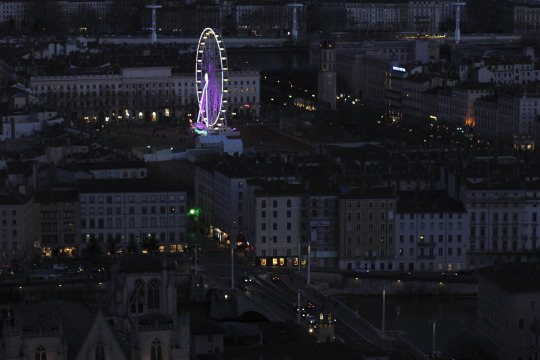
#original photographers#photography#photographers on tumblr#my art#photooftheday#lensblr#lyon#ville de lyon
7 notes
·
View notes
Text

6 notes
·
View notes
Text
Place du Bachut Est à Lyon Fin des études de conception - Bientôt les travaux
Les études de conception pour le réaménagement et la végétalisation de la place du Bachut Est à Lyon prennent fin. Les travaux devraient commencer aux printemps 2025.
Pour vous faire patienter, voici quelques illustrations du projet dont les grands objectifs sont la création d’ilots de fraicheur, la diversité des usages et la mise en valeur de la Maison de la Danse.
Rendez-vous au printemps 2025 pour les premiers coups de pelles !
Equipe MOE : PLAN B / PRESENTS [BET VRD] / ECL studio [éclairagiste] / DILUVIAL [BET Fontainerie]
Maître d’ouvrage : Ville de Lyon / Service Aménagement et Paysages / Direction Biodiversité et nature en Ville
Illustrations : Cyrille Jacques [perspectives] & PLAN B [croquis 3D et plan]




#plan b architectes urbanistes#plan b paysage#ville de lyon#urbanisme#place du bachut#maison de la danse
0 notes
Text
0 notes
Text
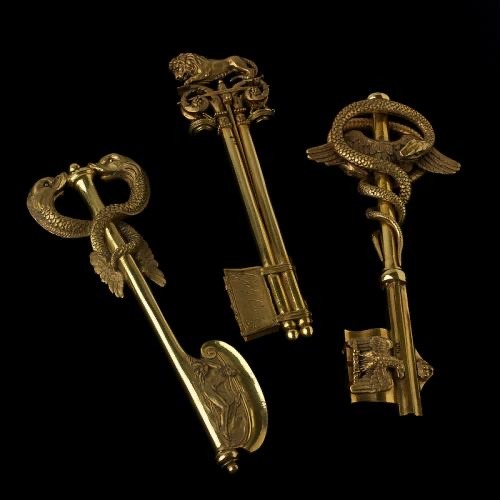
The keys to the city of Lyon, France. 1805.
Joseph Chinard drew the pieces and the goldsmith Antoine Saunier made them.
They are symbols of Lyon’s allegiance to Napoleon I, who lifted the city from its ashes after the French Revolution. They were created in 1805 on the occasion of the emperor’s visit to Lyon.
These three keys are works of art and do not materially open any door of the city. They symbolically represent the three divisions (north, west and south) that made up the city under the First Empire (1804-1814). Each is decorated with a symbol illustrating the specificity of the neighborhood.
They were made for the visit to Lyon on April 10, 1805, of Emperor Napoleon I and Empress Josephine. They are presented to him publicly, in front of a floor of politicians —whose names are engraved on the back of the dish — as a sign of allegiance and gratitude on the part of the city.
MHL - Musée d'Histoire de Lyon
#Lyon was the second largest city in France at the time#Les Clés de la Ville de Lyon#Musée d'Histoire de Lyon#Lyon#France#napoleonic era#napoleonic#napoleon bonaparte#first french empire#french empire#19th century#history#keys#1800s#napoleon a political life#Joseph Chinard#Chinard#Antoine Saunier#Saunier#art#french revolution
41 notes
·
View notes
Text
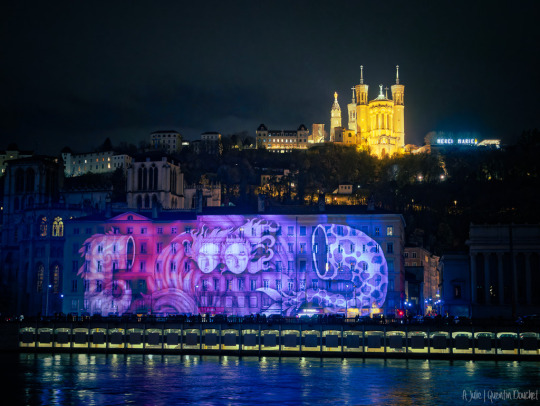
Ceux du fleuve.
(Fête des Lumières Lyon 2023 - Décembre 2023).
A Julie…
© Quentin Douchet.
#lyon#fête des lumières lyon 2023#city#ville#nuit#night#lightshow#france#photographer on tumblr#fête des lumières
12 notes
·
View notes
Text

Le projet d’Hôtel de ville de Lyon dans le quartier de la Part-Dieu, années 70.
1 note
·
View note
Text
Sunday 16 August 1998 - stamping the wrong TGV reservation (return vs away) - the underground cograil line - automatic train without screen doors, doesn't Nürnberg have something similar? - Roman Theater and Vieux Lyon - walk across the Sâone and Rhône to Part Dieu - Paris, one rail journey in the north before going to bed
Sunday 16 August 1998 (originally written August 2018)
Bonjour à tous! Summer is coming soon to a close, at least in 1998, and I will have to return to university for one final year. Sunday the 16th August 1998 is the last day I can do any meaningful travel, and stores are closed until Monday the 17th August. And there is one last free space in my Eurail Pass for taking the train.
The summary of what I did 16th August 1998 - pretty much a day of riding the Lyon metro
woke up around 6:20 AM, took shower and had breakfast at 7 AM sharp
Took M8 from Ledru Rollin to Bastille and M1 to Gare du Lyon
found my assigned car and seat in 1st class TGV to Lyon Part Dieu but validated the wrong reservation
arrived Lyon Part Dieu about 9:45 AM
had snack at Quick burger in the shopping mall and bought day pass for metro
took Metro B to Charpennes and went up and down Cours Emile Zola
took Metro A to Hôtel de Ville - Louis Pradel, then Metro C to Cuire
walked down from Cuire to Rue de Margnolles and caught bus to Croix Rouge (metro C)
took metro C to Hôtel de Ville - Louis Pradel, Metro A to Bellecour, then Metro D to Gorge du Loup
Metro D to Vieux Lyon, and funicular to St Just via the Minimes Roman amphitheater
funicular to St Just to have a look around
funicular to Vieux Lyon and Fourvière, saw tower smaller in scale from the Eiffel in Paris, and return
walk along Rue St Jean in old Lyon, saw tourbus with Guignol painted on it
crossed the Sâone by the Passerelle du Palais de Justice (made a double exposure with my camera somehow, on that particular bridge)
walked along Rue Childebert and crossed the Rhône by the Pont Wilson
walked to the metro D station Guilliotière and rode to Gare de Vénnisieux
rode metro D to Saxe Gambetta and Metro B to Part Dieu
go to Quick, order two takeaway burgers and coke
at Lyon Part Dieu, boarded return train at 6 PM, ate hamburger at a free seat not next to anyone, after my ticket and reservation were checked
about 8 PM, at Gare du Lyon, took RER A to La Défense, then went on a clockwise loop towards Gare St Lazare
went back to hostel to sleep
That was the summary of Sunday 16 August 1998. So here is most of what happened, based on my photo album called "Lyon and Paris in August 1998". Unfortunately it is near impossible to properly reorder the photos in chronological order but you likely will have a good picture of what I saw and did that day. I need to let you know that this day I had made extensive use of Lyon's metro, so to eliminate references to the Lyon Metro, will make this day's story meaningless. Hope you will understand.
In France, the sun rises late and sets late, similar to Spain, but not Portugal which is in the same time zone as the UK and Ireland. I therefore had to set my watch to 6:15 AM (and all this time I never mentioned it was a replica of that similar to Marty McFly from "Back to the Future"). Breakfast would not likely be served until at least 7 AM, so I had to take a shower and get my things together, particularly my radio/tape recorder, camera, AA batteries and 35 mm film, couple of 0.33 L Orangina bottles, and the all-important Eurail Pass with accompanying reservations. I wrote in 16 on top and 08 on the bottom, in the last remaining space for the dates used, and there would be no further point to use it on the 17th as I needed to stay within Paris. In any case, I had my Paris Visite ticket that would allow me to go as far as zone 3 (La Défense) valid up to 11:59 PM on the 17th.
Going down the spiral staircase, I ended up on the ground floor. I had the usual Auberge Internationale des Jeunes breakfast, namely coffee in cups some with the handles broken off by past guests (to give them character), six inch sourdough breadrolls, butter and seasonal jam. I think it was apricot. I was the only guest in the room up to 7:10 AM when someone else entered. About 7:15 AM I finished and left for the Ledru Rollin station westward down Rue Trousseau to catch the M8 to Bastille. As I did not have much more than my day bag, the transfer was fairly easy, despite the steps required to climb. It was only a few stops on the M1 to Gare du Lyon. Coming out of the station, I found the track and the car in the upper level of the first class of the TGV that I was reserved for. Well, you think that I might choose the Paris to Lyon reservation to validate. Did not work out that way. I validated the Lyon to Paris reservation. How embarrasing. The train left about 8 AM. It was about half an hour until the conductor came to check tickets. I flagged down the conductor to tell him that I meant to validate the Paris to Lyon reservation and not the other one. He said no problem, then wrote on the reservation, en francais, "composté par erreur" (validated in error) so that the return trip conductor would accept the correct reservation. Everything from then was fine for the rest of the journey to Lyon Part Dieu. Even the seats were nice, you could use the rocker switch to recline the seats
About 9:55 AM, the train arrived at Lyon Part Dieu. The approach to Part Dieu is almost directly north-south. To the southwest is a shopping mall with access to the Metro line B. At the time, the ticket machines did not accept paper bills so I had to change a 50 FF note at the Part Dieu location of Quick to get a day pass. I bought a small Sprite and received about 46 FF change, enough for me to get a day pass. Day passes on TCL (Transport en Commun Lyonnais) are valid for 24 hours, and there were no fare gates at the time as the system was proof-of-payment.
As soon as I bought my ticket, I validated it for 10:10 AM, and went to the Metro B Charpennes platform. In Lyon, the metro runs on the left, similar to Rome, Madrid, Lisbon and London. At Charpennes, there is a direct pedestrian link from the Metro B platform to the Perrache-bound Metro A platform. Per http://www.urbanrail.net/eu/fr/lyon/lyon-metro-b.htm, "The northern terminus at Charpennes is single-track, with line B trains being able to switch to the line A tracks to reach the depot at La Soie. Passengers changing between line B and the inbound line A can do so without climbing any stairs."
I climbed up the stairs to see what was at Charpennes, and it was the Hotel Mercure on Cours Emile Zola. I just stood there for a couple of minutes before moving on to Hôtel de Ville-Louis Pradel to get the Metro C. Metro A is similar to Metro B, but the Metro C has two main differences. One, the Metro C uses overhead wire for its electric feed, and two, between Hôtel de Ville-Louis Pradel and Hénon, a cog rail is used due to the incline. In fact, Croix-Paquet is said to be the steepest metro station in the world. At Hôtel de Ville-Louis Pradel, there is a slight rise at the platform to help the train come to a safe stop. Going up to Hénon was quite interesting, and Croix-Paquet was indeed quite steep. Between Croix-Rousse and Hénon it was fairly flat at the stations. Between Hénon and Cuire there is no need for the cog rail as that section is essentially on a plateau.
I thought I could take a bus from Cuire to Croix Rouge, but realized it was a Sunday and headways with TCL are a bit longer. I managed to get four photos of the passing Metro C cars with their pantographs. They kind of look like the Glasgow Subway cars in a way. I ended up walking along the Rue de Margnolles to a bus stop that had a line going to Croix Rouge so I could take Metro C back to Hôtel de Ville. After getting back on the Metro A, I went to the Bellecour station to make a transfer to Metro D. The Lyon Metro has few if any stations with central platforms, but Bellecour has the central platform for line D. Another thing about Metro D, although it is similar to lines A and B, it is billed as one of the first large-profile driverless metro line. In general, passengers on Metro D can be in the front and get a driver's view, and there is also a panel locked away in case it becomes necessary to manually operate the unit. I went on Metro D as far north as Gorge du Loup. Between Vieux Lyon and Gorge du Loup, it is a long underground section under Fourvière and the Cimitière de Loyasse. And at Gorge du Loup, there were a couple of things I noticed, one being a green Mehari, about as green as the average watermelon, and two, some musician I thought I recognized but wasn't. He was just some random person playing his guitar. I let him be and went back to the metro station.
At Vieux Lyon, there are not one but two cable car systems. One goes to St Just by way of the Minimes - Roman theater station. The amphitheater is close to the station and is open-air just like in ancient Greek and Roman times. From there you can also see down to the St Jean cathedral in Vieux Lyon. The station itself, in 1998 did not have any fare gates, and it has side platforms. It had an overpass for the far platform. Since the trains cannot operate in a single direction due to the mechanics of a conventional two-car funicular system, there are two signs to indicate which platform will serve which station, either St Jean at the bottom or St Just at the top. The signs switch each time so sometimes the close platform will serve St Jean, and the other St Just, then vice versa. St Just is only a residential area, but I found a classic 1970s Peugeot 304, that was pretty much the highlight of me visiting Lyon St Just.
It was time to visit the other part of Vieux Lyon, namely Fourvière. It required going down to Vieux Lyon St Jean and taking the Fourvière funicular. The Fourvière church reminded me much of Notre Dame de Paris. There was even a small-scale tower reminiscent of the Eiffel Tower. Probably it was twice the size of the replica in Paris, TX, not much more. I took the funicular back to St Jean cathedral, and walked along the Rue St Jean. I guess most people may not know Guignol, but I noticed a tourbus with his image on it.
To take a break from the rails, I wanted to cross the Sâone and Rhône rivers on foot. There was the Passerelle du Palais de Justice foot bridge. Somehow I made a double-exposure with my camera, if you see it in the photo album, you may know which one I am referring to. Then along Rue Childebert, I crossed the Rhône by Pont Wilson. The Metro D station Guilliotière was not far, so I boarded the train to Gare de Vénnisieux. At that station, it was not so deep underground and there was some natural light so I could get a good photo of the train leaving to turn around and coming back. Once it returned to the westbound platform, I boarded it and stayed on until Saxe Gambetta to go north on Metro B, to Part Dieu. It was about 5:30 PM and close to time when I needed to take the train back to Paris. At Quick, I ordered two hamburgers and a coke. There was not much time to eat, so I went to the train platform to find my seat. It was in the lower deck of the first class in the TGV train. The train left around 6 PM. I was sitting next to someone and I did not want to eat in front of her. I waited out of respect, for the conductor to arrive and let me choose vacant seats a few rows down. I also mentioned, en francais, that my previous reservation was validated incorrectly and he noticed the correct time. It was all good up to Paris Gare du Lyon.
The TGV arrived at Gare du Lyon about 8 PM and the sun was still up. Because the RER Line A stops at Gare du Lyon, I thought, let's do a clockwise loop at La Défense and come back through St Lazare and Auber, and end up back at the hostel. So I did that for the next hour, making good use of the Paris Visite card. While on the Banlieu train from La Défense to St Lazare, I heard "Les Portes du souvenir" by Les Nubians on the radio.
I was not particularly hungry after eating the two Quick burgers, so I went back to the hostel to sleep. I was fortunate to have quiet roommates. Monday the 17th would be a big day mainly of chores and such, maybe an adventure or two but not much more.
Thanks for reading, and bonne nuit, à demain!
#France#Paris#11ème#Gare du Lyon#TGV#composté par erreur#M8#M1#Bastille#SNCF#Quick#Part Dieu#Charpennes#Cours Émile Zola#Hôtel de Ville#Louis Pradel#Cuire#Rue de Margnolles#Croix Rouge#Gorge du Loup#Vieux Lyon#St Just#St Jean#Minimes#amphitheater#Sâone#Rhône#Guignol#Fourvière#Guilliotière
0 notes
Text
france
france
#france#parisfrance#eiffel tower#notre dame#bordeaux#marseille#nantes#lyon#strasbourg#chamonix#musee du louvre#arc de triomphe#louvre#versailles#sainte chapelle#musee d'orsay#tuileries#louis vitton#place de vosges#hotel de ville#jardin de plantes#bonjour#bonsoir#grand palais#louvre pyramid#pont des arts#petit palais#trocadero#trocadéro#trocadero gardens
0 notes
Text

Les couleurs de la ville
Boulevard de la Croix Rousse II
69004
Croix Rousse
Lyon
4871
#photographie urbaine#urban photography#couleurs urbaines#urban colors#décor urbain#urban decor#minimalisme#minimalism#argentique#analog photography#canon AE1 prog#kodak gold 200#photographers on tumblr#poltredlyon#osezlesgaleries#lyonurb#brumpicts#frédéric brumby
131 notes
·
View notes
Text

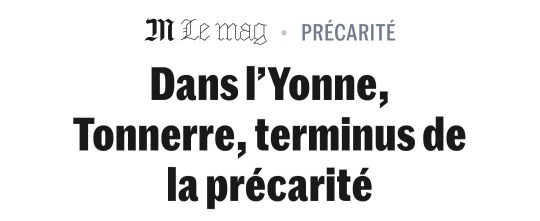
C'est malheureusement à cause de ce genre de titres que Paris va un jour exploser
En Province, les Français mangent du gruau d'avoine et s'éclairent à la bougie l'hiver quand ils ne peuvent pas aller à la cafétéria du Leclerc pour se réchauffer
#celui de Tonnerre m'a trop fait rire parce qu'ils ont essayé de faire une métaphore/ligne de réflexion avec le train pdt tout l'article#en mode Tonnerre c'est le bout du processus d'éloignement parisien tout le monde va mourir là-bas dans le terminus du TER#mais c'est pas du tout le terminus la ligne va jusqu'à Dijon ou Lyon.... si tu t'éloignes d'une grande ville tu te rapproches d'une autre..#j'ai pas compris.......
25 notes
·
View notes
Text
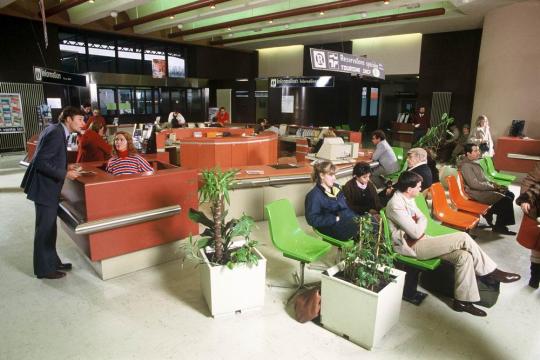


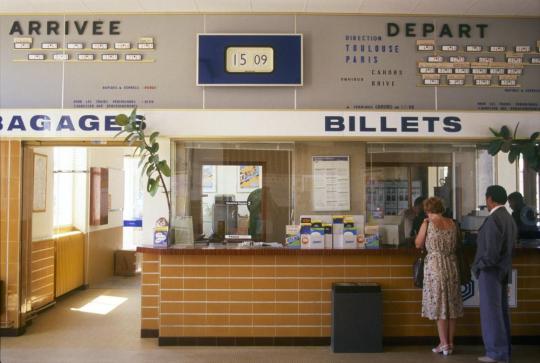
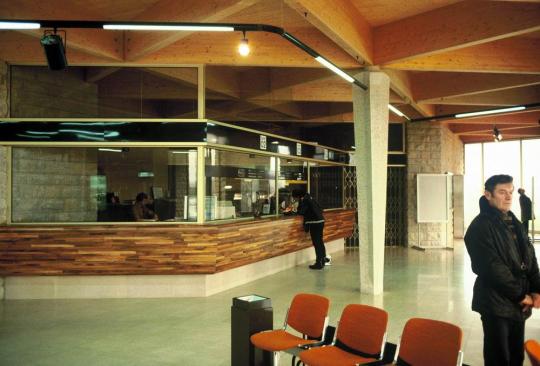

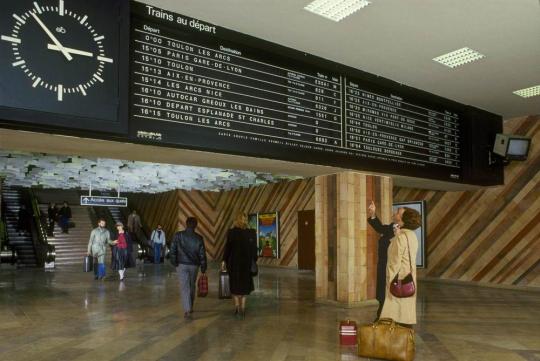


French Train Station interior
Lyon Perrache (1982)
Vaudreuil Ville Nouvelle (1978)
Strasbourg (1988)
Souillac (1984)
Macon (1982)
Paris Gare de Lyon Train Bleu (1982)
Marseille Saint Charles (1985)
Lille Flandres (1979)
Lyon Part-Dieu (1983)
Source : Sncf Open Archives
310 notes
·
View notes
Text









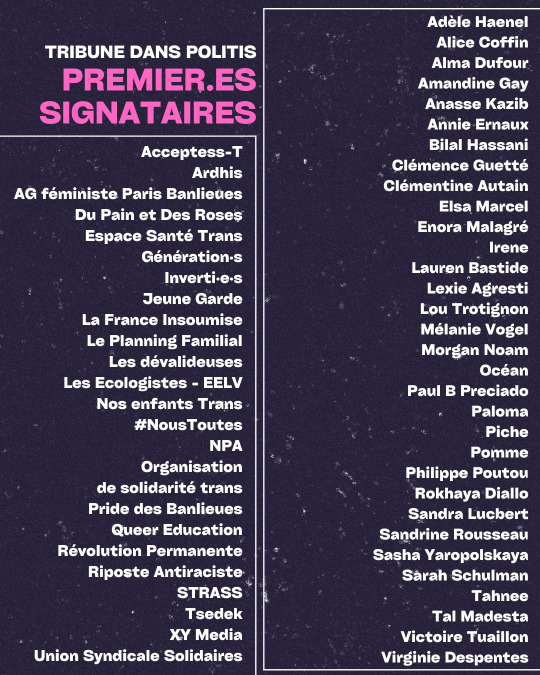
Le 5 Mai on fait front ensemble !
Bonjour à toustes ! 🌿🦊
Ce dimanche 5 Mai à lieu une mobilisation nationale de plus de 800 personnalités, organisations et associations pour se battre contre l'offensive réactionnaire et anti-trans de ces derniers mois.
Cette offensive, relayée par plusieurs grands médias (Figaro, le Point, Valeurs actuelles, le JDD, Marianne, Europe 1..etc) coïncident avec un certain livre complotiste sorti le 11 avril dernier et avec la proposition de loi des sénateurs du parti Les Républicains, qui veulent :
- Interdire la transition sociale et médicale des mineurs - Leur imposer des thérapies de conversion - Punir les médecins qui accompagnent les mineurs trans de 2 ans de prisons
Au delà des mineurs, le rapport de LR veut avoir la possibilité d'interdire toutes transitions des adultes jusqu’à 25 ans, une mesure qui est déjà adoptés dans certains états aux USA.
A côté de cela, ces mêmes partis laissent les enfants intersexes être mutilés à la naissance par soucis de "conformité"/"normalité". Ces attaques réactionnaires de la droite et de l'extrême droite à l'échelle internationale visent le droit à disposer de son corps, et donc directement les droits reproductifs comme l'IVG !
Féministes, LGBTIA+, antifascistes, nous devons faire front ensemble contre ces attaques des droits humains fondamentaux ! Rendez vous le 5 Mai IRL ou en ligne pour celleux qui comme moi ne peuvent pas aller manifester :
📌Paris : République, 14h 📌 Toulouse : Jean jaurès, 13h 📌 Marseille : Vieux port, 11h 📌 Strasbourg : 4 mai, pl. kléber, 17h 📌 Quimper : Place Saint Corentin, 18h 📌 Havre : Hôtel de ville, 15h 📌 Bordeaux : Hôtel de ville, 14h 📌 Besançon : Place Pasteur, 14h 📌 Niort : Place de la Brèche, 15h 📌 Bruxelles : 15h, en recherche du lieu 📌 Montpellier : place de Comédie, 15h 📌 Nantes : marche, Grue Jaunes sur l’ile, 14h 📌 Chambery : place de Génève, 14h 📌 Rennes : en préparation 📌 Lyon : en préparation 📌 Nancy : en préparation 📌 Lille : en préparation 📌 Lyon : en préparation 📌 Brest : place de la liberté, 17h 📌 Dijon : place Darcy, 16h 📌 Rochelle : quai du Carénage, 15h 📌 Lorient : Place Glotin, 15h 📌 Pau : préfecture de Pau, 16h 📌 Bayonne : place de la liberté, 12h 📌 Tours : place Jean Jaurès, 15h 📌 Poitiers : Place de Maréchal Leclerc
30 notes
·
View notes
Text

« Les Français d’aujourd’hui se souviennent des bombardements atomiques sur le Japon en août 1945, mais ignorent que les bombardements anglo-américains dans leur propre pays ont fait presque autant de victimes (70 000) que la bombe atomique de Hiroshima (75 000) et beaucoup plus que celle de Nagasaki (40 000). Amnésiques de leur propre histoire, nos compatriotes ont tous appris que Coventry, bombardée par la Luftwaffe dans la nuit du 14 au 15 novembre 1940, est une ville martyre, mais ne savent pas que le nombre de morts qui a résulté de ce raid aérien (380) est presque de cinq fois inférieur à celui des victimes françaises du bombardement américain de Marseille (1 752 morts), le 27 mai 1944. Or, la cité phocéenne n’a jamais été qualifiée de ville martyre, pas plus que les autres agglomérations françaises écrasées sous les bombes américaines, que ce soit Saint-Étienne (1 084 morts), Nantes (1 500 morts), Lyon (717 morts), Avignon (525 morts), Le Portel (500 morts), Rennes (500 morts), Toulon (450 morts) ou Nice (384 morts), pour ne pas citer Rouen dont les 200 morts des bombardements américains du 30 mai au 4 juin 1944 sont venus s’ajouter aux 900 victimes du bombardement anglais de la nuit du 18 avril 1944. »
Jean-Claude Valla
23 notes
·
View notes
Text
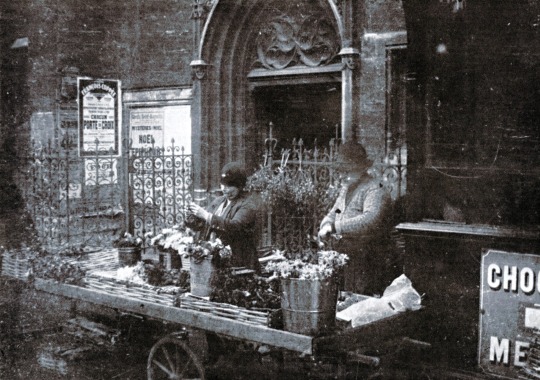
Charles Popineau, La marchande de fleurs, Lyon, 1930.
La profession de bouquetière est un métier ancien entièrement féminin. Travaillant probablement pour les jardiniers, ces femmes qui agencent des bouquets de fleurs naturelles, se sont constituées progressivement d’elles-mêmes en communauté professionnelle, prenant ainsi une petite indépendance au XVe siècle. Leur statut est reconnu par le pouvoir royal à partir du XVIIe siècle. Appartenant à ce qu’on peut appeler « les petites professions », désignant un travail modeste, ces femmes sont présentes au quotidien et deviennent ainsi des figures marquantes dans les rues des villes. Les sources mentionnant cette profession et ses vendeuses sont très minces. Ce qui est sûr, c’est que l’émergence et le fonctionnement d’une communauté féminine attenante au métier de bouquetière traduisent une réalité assez éloignée de la perception romantique et fantasmée de la jolie jeune femme, marchande des Halles, représentée par les illustrateurs dans un mode idyllique pour les besoins de la création artistique. Travaillant pour des jardiniers ou allant s’approvisionner entre 4 heures et 8 heures du matin, les journées d’une marchande de fleurs demandent bien des qualités. Satisfaire la clientèle et vendre les fleurs avant qu’elles ne se fanent est une priorité surtout quand certaines espèces coûtent parfois des prix exorbitants dépassant largement le salaire d'une employée. Devant l’église Saint-Bonaventure, cette marchande de fleurs des années 30 constitue son bouquet.
23 notes
·
View notes
Text

Montée du Gourguillon, Lyon. En empruntant la pittoresque Montée du Gourguillon, vous pourrez découvrir un bijou d'époque médiévale. Nichées au cœur de l'impasse Turquet se trouvent les demeures les plus anciennes de la ville lumière, érigées aux alentours des 13e ou 14e siècles. Il semblerait que leur construction soit l'œuvre de moines, et que les passerelles en bois aient facilité l'accès aux diverses cellules. De plus, une inscription à l'entrée de l'impasse nous informe qu'il s'agit probablement du lieu où les premiers édifices lyonnais ont vu le jour.
23 notes
·
View notes